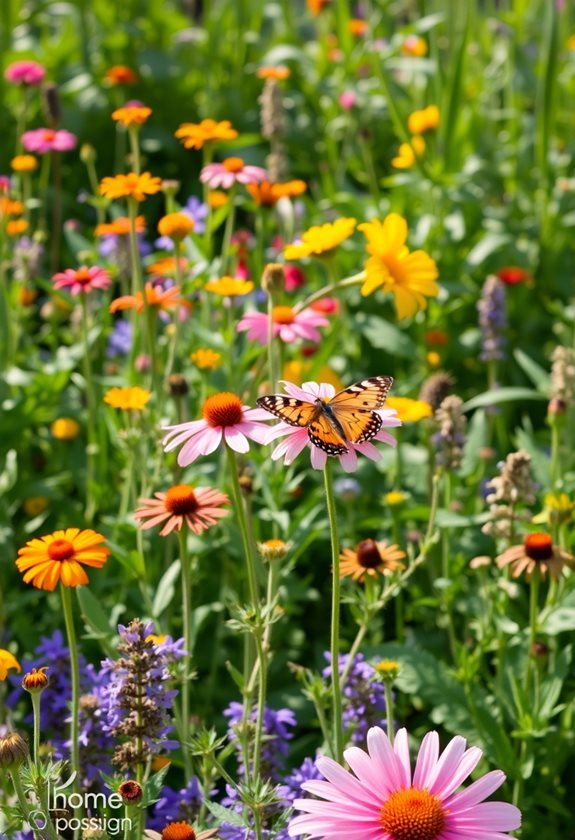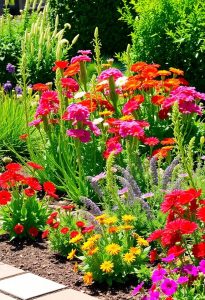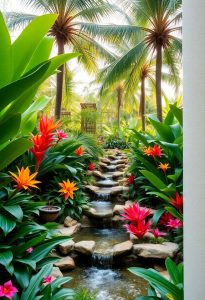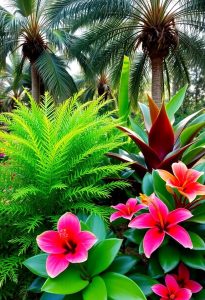Native plant gardens are amazing for you and the environment! They boost biodiversity by attracting pollinators and providing food and shelter for local wildlife. Plus, these plants need less water and care—talk about a gardener’s dream! They enrich soil health, making it more robust and sustainable. And guess what? You’ll save money by cutting down on maintenance costs. Isn’t that a win-win? Stick around to learn how to create your very own native oasis!
Design Highlights
- Native plant gardens enhance biodiversity by providing habitats and food sources for local wildlife and pollinators.
- They require less water and maintenance, resulting in lower water bills and reduced labor costs.
- Native plants promote soil health by improving soil structure and boosting microbial life.
- These gardens attract a variety of species, promoting a balanced ecosystem and diverse food webs.
- Incorporating native flowers adds aesthetic appeal while supporting local ecosystems.
Enhancing Biodiversity
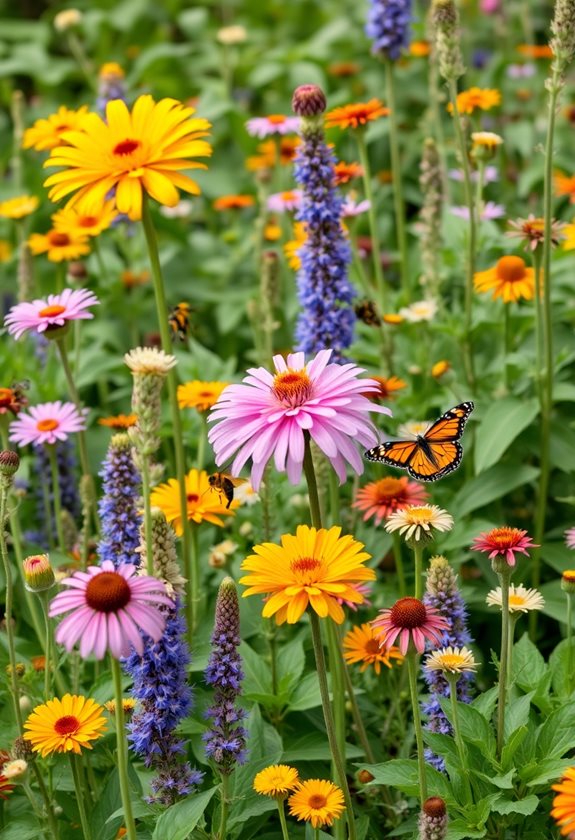
When you think about your garden, have you ever considered how it can play an essential role in enhancing biodiversity? By choosing native plants, you’re not just beautifying your space; you’re creating a thriving ecosystem! Native plants provide food and shelter for local pollinators, birds, and other wildlife. Plus, they require less water and maintenance—talk about a win-win! In fact, incorporating stunning native flowers can significantly boost the aesthetic appeal while supporting local ecosystems.
Enhance biodiversity in your garden by choosing native plants that support local wildlife while requiring less maintenance!
Want to make a difference? Here are a few steps to get started:
- Research local native species.
- Create layers: mix heights and textures.
- Group plants to attract specific wildlife.
Embrace your garden’s potential and watch nature flourish!
Supporting Local Wildlife
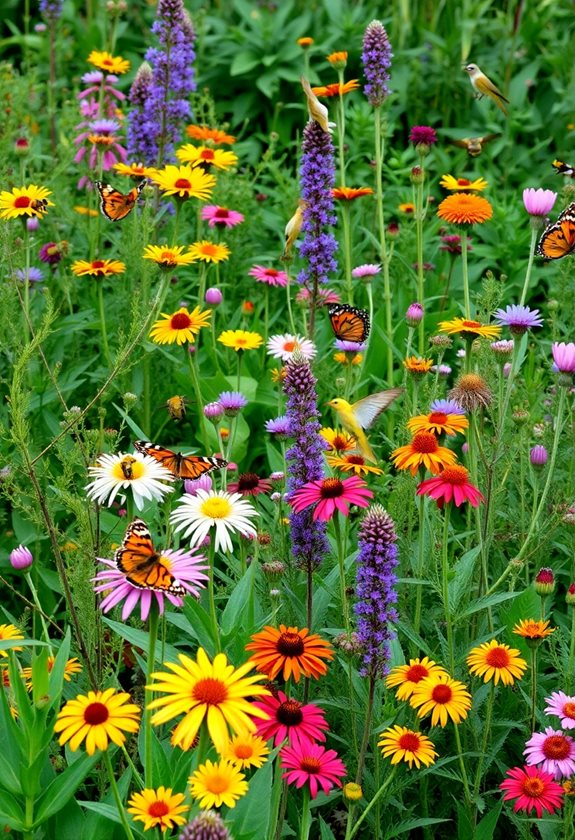
Have you ever looked out at your garden and wondered how it could be a haven for local wildlife? It’s easier than you think! By incorporating native plants, you provide food and shelter for various creatures. Imagine the flutter of butterflies and the cheerful chirping of birds—it’s magical! Here are a few ways your garden can support local wildlife:
- Provide Food: Native flowers attract pollinators.
- Create Shelter: Dense foliage offers safe nesting spots.
- Support Ecosystems: Native plants promote a balanced food web.
- Encourage Biodiversity: Variety in plants invites diverse species.
Additionally, pollinator-friendly foliage plants can enhance the beauty of your garden while attracting even more wildlife. Your garden can be a sanctuary; let’s make it welcoming!
Reducing Water Usage
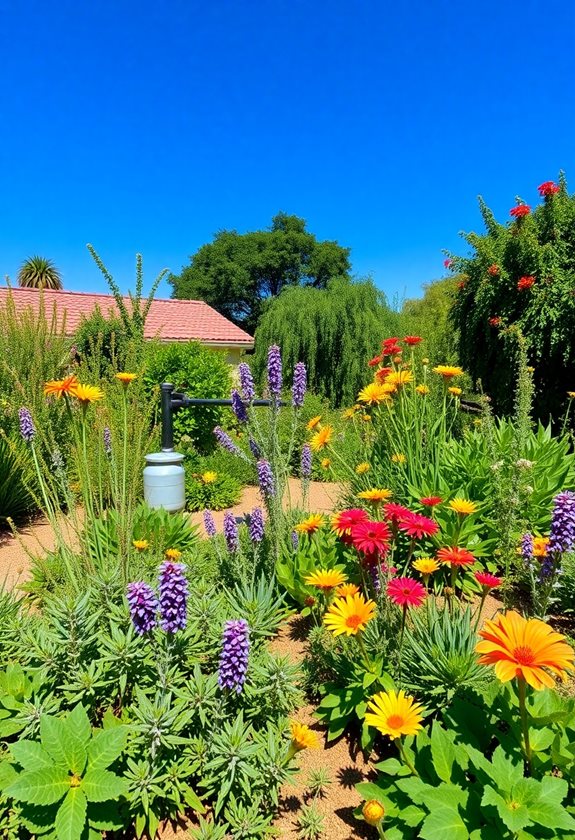
While it might seem tricky to keep your garden thriving without wasting water, you’ll be surprised at how easy it can be with native plants! These beauties are naturally adapted to your region’s climate, meaning they need less water than exotic species. Imagine reducing your water bill while still enjoying a lush garden! Additionally, choosing low-maintenance plants can further enhance your garden’s water efficiency and overall sustainability.
To maximize water efficiency:
- Group plants by water needs.
- Use mulch to retain moisture.
- Water in the early morning or late afternoon.
Lowering Maintenance Costs
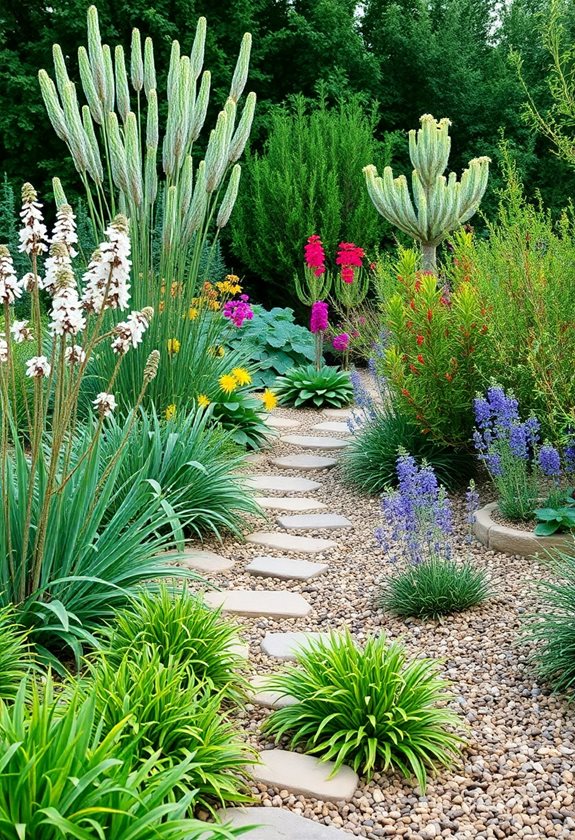
You might be surprised to learn that creating a native plant garden can actually lighten your maintenance load and save you money! By choosing plants that thrive in your local environment, you’ll reduce tasks like watering, weeding, and pest control. Think of the benefits:
Creating a native plant garden simplifies maintenance and saves money by reducing watering, weeding, and pest control tasks.
- Minimal watering needs
- Less frequent pruning
- Natural pest resistance
- Reduced fertilizer requirements
With fewer resources required, you’ll notice lower utility bills and less time spent on upkeep. Imagine spending your weekends enjoying your garden instead of laboring in it! A native garden isn’t just beautiful; it’s a smart investment for your pocket and your peace of mind! Additionally, incorporating stunning climbing plants can further enhance the aesthetics of your native garden while maintaining low maintenance needs.
Promoting Soil Health
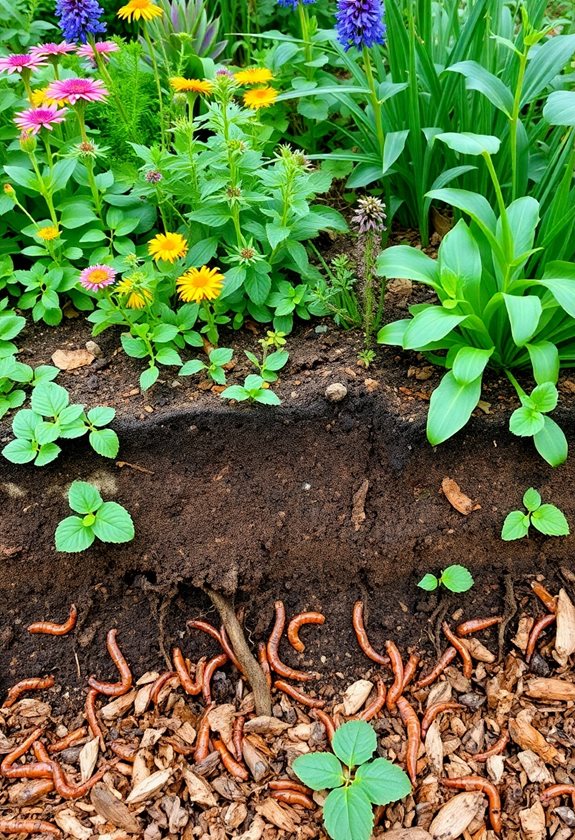
When you immerse yourself in the world of native plant gardens, you’ll discover that promoting soil health is like giving your garden the ultimate power-up! Healthy soil fuels your plants and supports local ecosystems. Did you know native plants have deep roots that improve soil structure? They help retain moisture, reduce erosion, and boost microbial life. Additionally, incorporating shade-tolerant foliage plants can further enhance your garden’s ability to thrive in diverse conditions. Want to enhance this? Try adding organic mulch or compost! These not only enrich the soil but also suppress weeds. So, why wait? Immerse yourself, and watch your garden thrive while you cultivate a vibrant habitat for wildlife. Isn’t that a win-win? Happy gardening!
Restoring Natural Landscapes
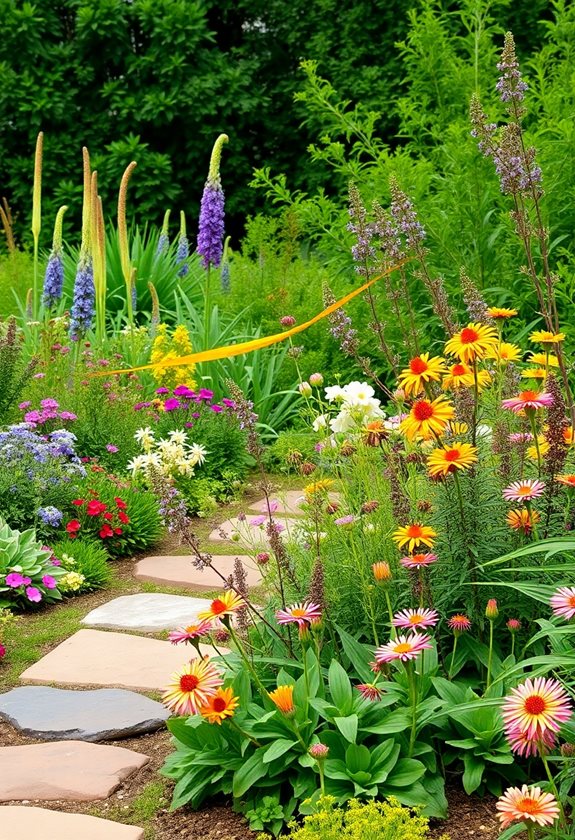
Restoring natural landscapes isn’t just a noble cause; it’s a rewarding adventure that lets you reconnect with the earth. Imagine transforming your space into a sanctuary for wildlife while enhancing the beauty around you! Here’s why you should immerse yourself in this journey:
Embark on a fulfilling journey to restore natural landscapes and create a vibrant sanctuary for wildlife.
- Biodiversity Boost: Native plants attract local pollinators and wildlife.
- Climate Resilience: These ecosystems adapt better to local weather patterns.
- Water Conservation: Native plants use less water, reducing your gardening efforts.
- Cultural Heritage: You’re preserving local flora and honoring your region’s natural history.
- Low-Maintenance Options: By incorporating drought-resistant plants, you can enjoy a beautiful garden with minimal upkeep.
Frequently Asked Questions
How Do Native Plants Differ From Non-Native Plants?
Imagine a garden where every plant knows exactly how to thrive in its environment—sounds dreamy, right? Native plants differ from non-natives because they’re perfectly adapted to your local climate and soil, requiring less water and care. They support local wildlife, too! Think of it like inviting only the best guests to your party—your garden becomes a vibrant ecosystem. So, why not give native plants a try in your backyard? You might just fall in love!
Can I Mix Native Plants With Non-Native Ones?
Absolutely, you can mix native plants with non-native ones! Just be mindful of their needs. For instance, if you plant drought-tolerant natives alongside thirsty exotics, you might end up with a sad garden. Here are a few tips:
- Group plants with similar water and sunlight needs.
- Watch for invasiveness; some non-natives can take over!
- Experiment and have fun! Gardening’s all about creating a space that brings you joy, right?
Are There Specific Native Plants for Different Climates?
Different climates call for specific native plants to thrive. For instance, if you’re in a dry area, consider planting succulents like Agave or desert wildflowers. In cooler regions, you might enjoy perennials like Purple Coneflower or Black-eyed Susan. Just think about your local environment’s rainfall, temperature, and soil type. Isn’t it exciting to create a garden that’s perfectly suited to your backyard’s unique vibe? Happy planting—your garden will thank you!
How Do I Choose Native Plants for My Garden?
Choosing native plants for your garden can feel like a puzzle, but it’s easier than you think! Start by considering your local climate and soil type. You can visit local nurseries for recommendations or check online resources. Don’t forget to think about your garden’s purpose—do you want to attract butterflies or create shade? Trust me, seeing those pollinators buzz around is worth the effort! So, what are you waiting for? Let’s dig in!
What Role Do Native Plants Play in Climate Adaptation?
Native plants play a vital role in climate adaptation, don’t they? They’re like nature’s superheroes, thriving in local conditions and requiring less water and maintenance than non-natives. By planting them, you help create resilient ecosystems that can withstand extreme weather. Plus, they support local wildlife, ensuring a balanced habitat. So, when you choose native plants, you’re not just beautifying your garden; you’re contributing to a healthier environment. Isn’t that a win-win?

